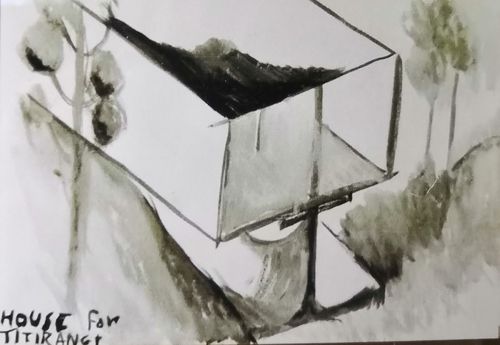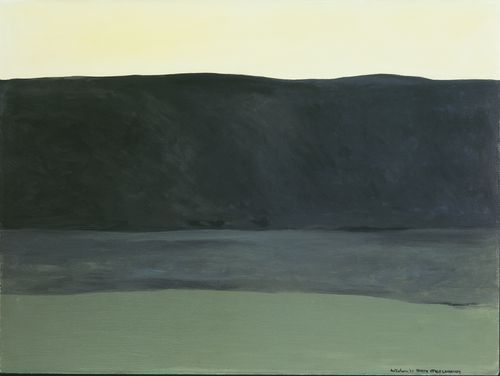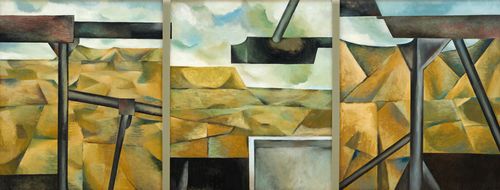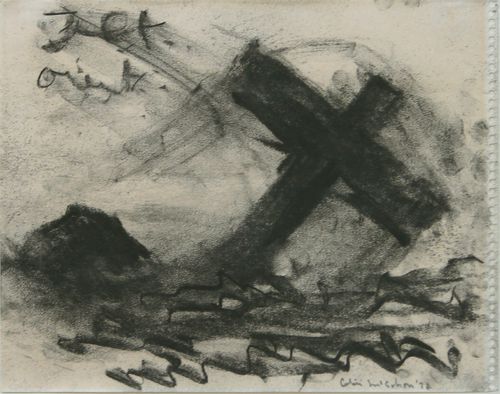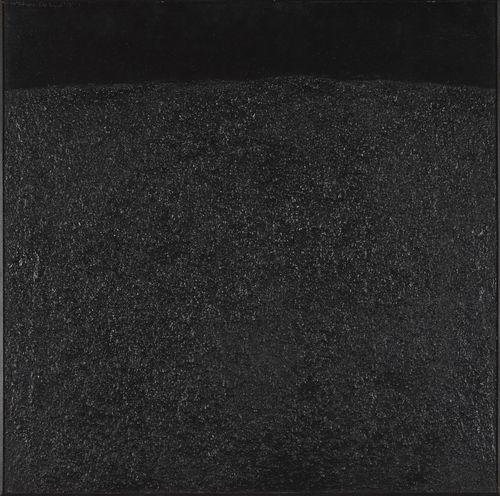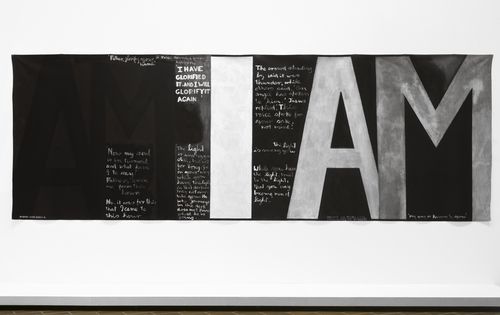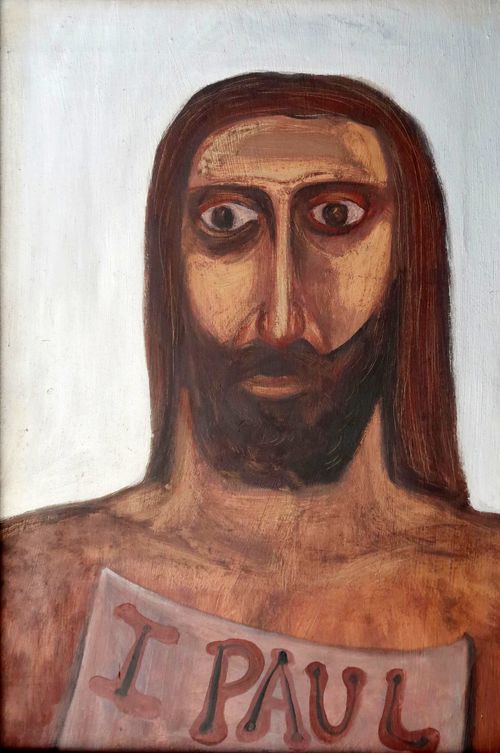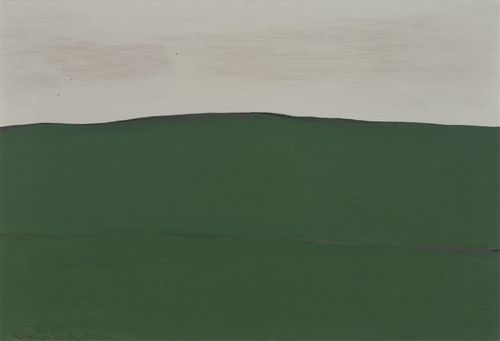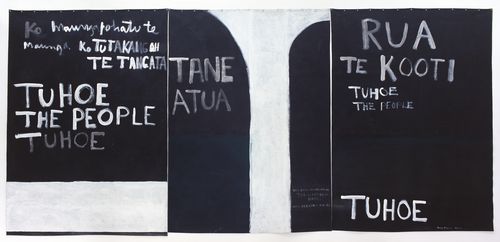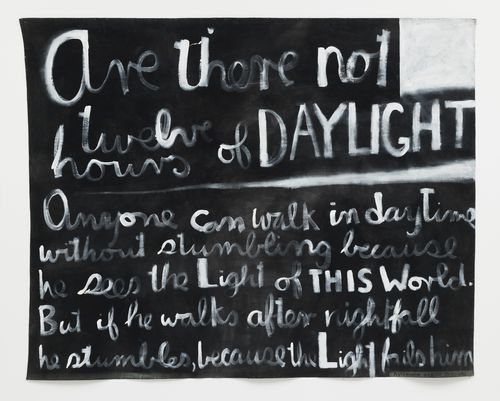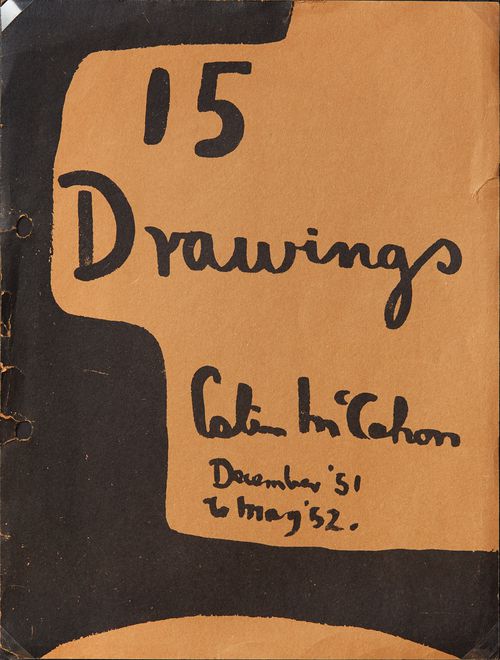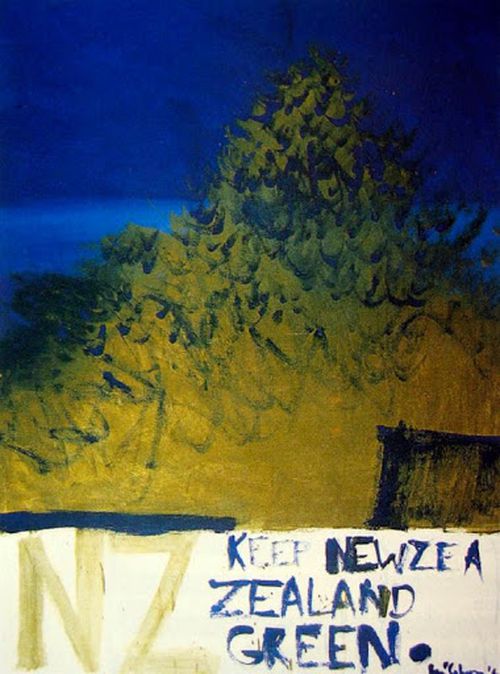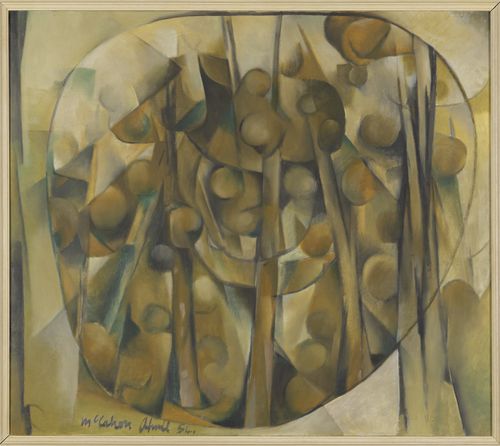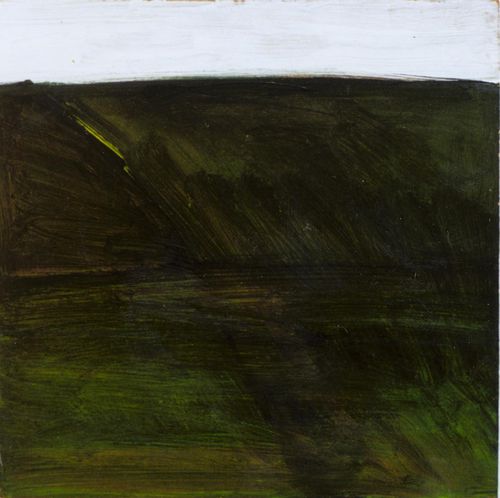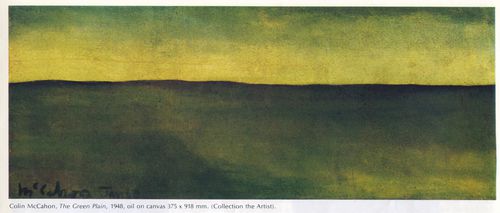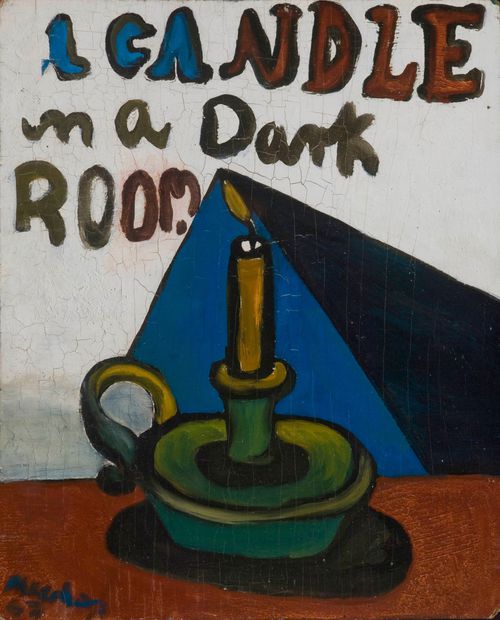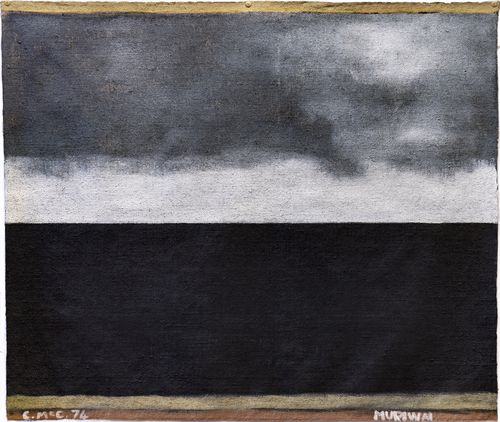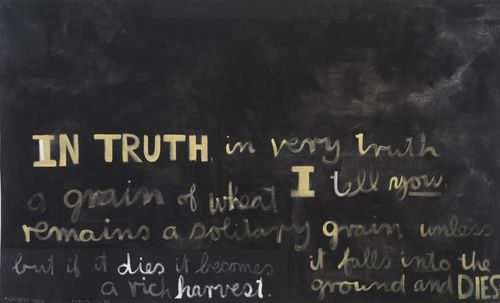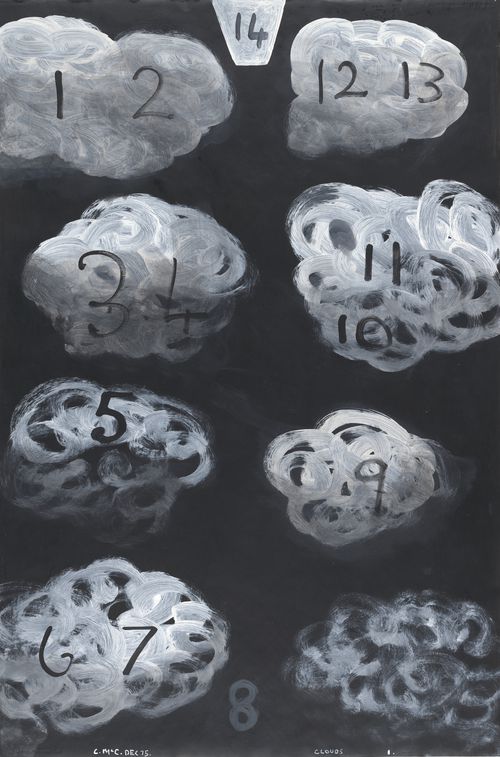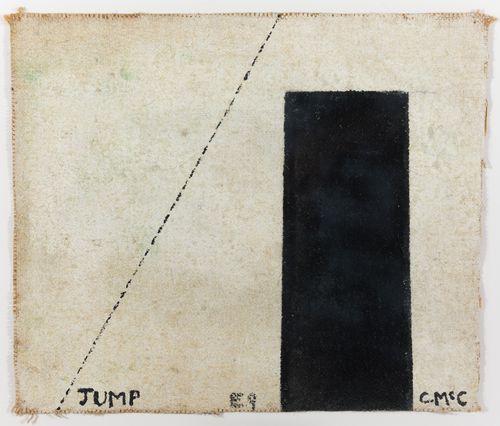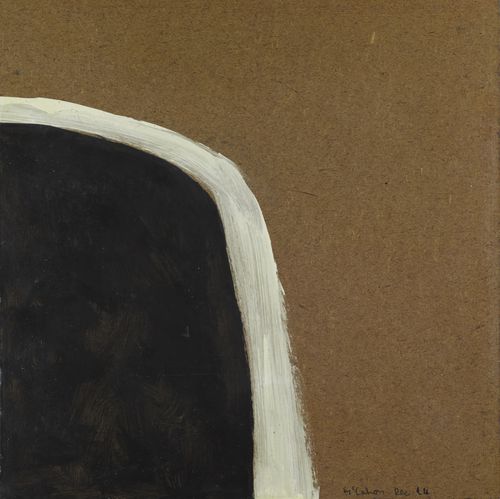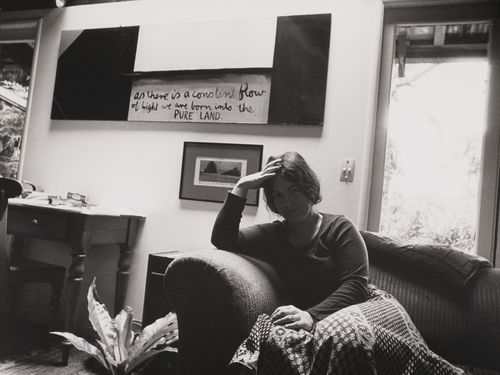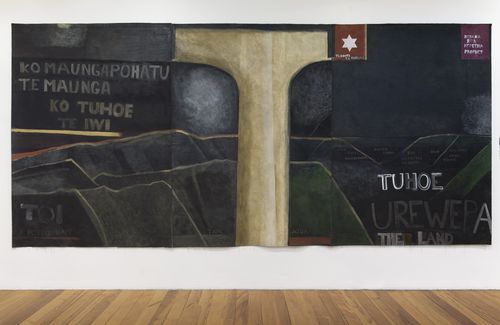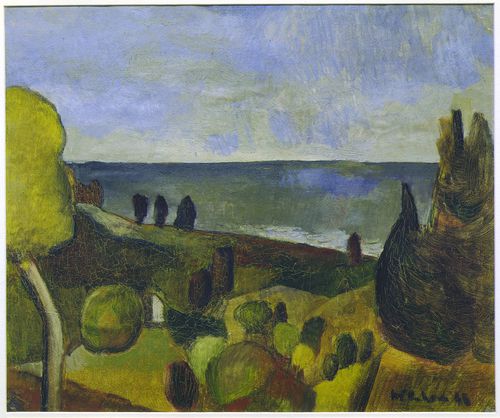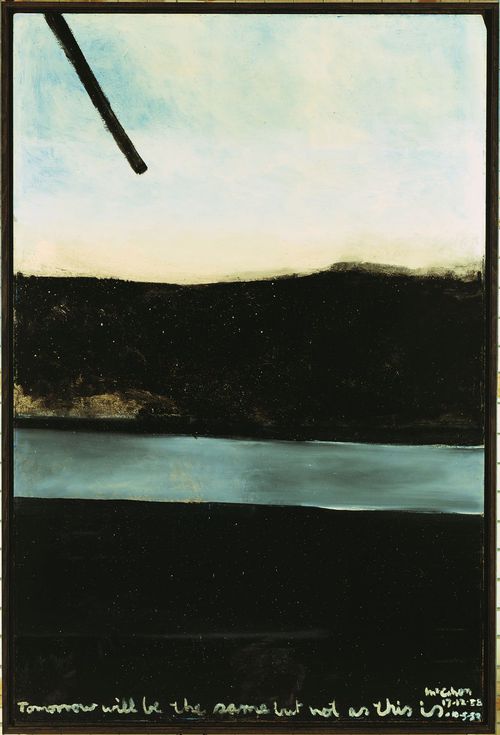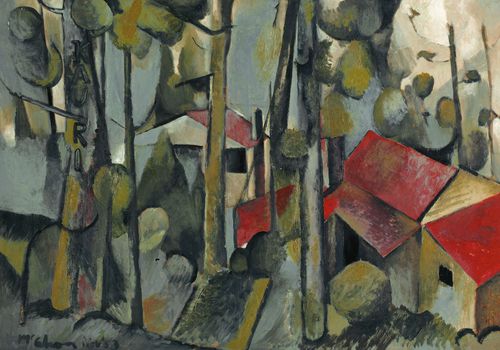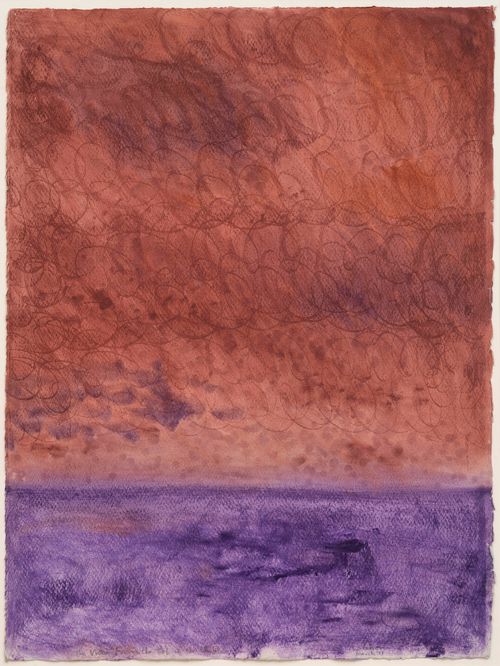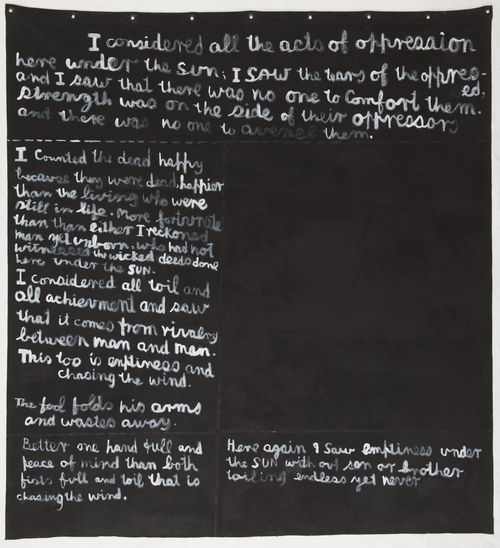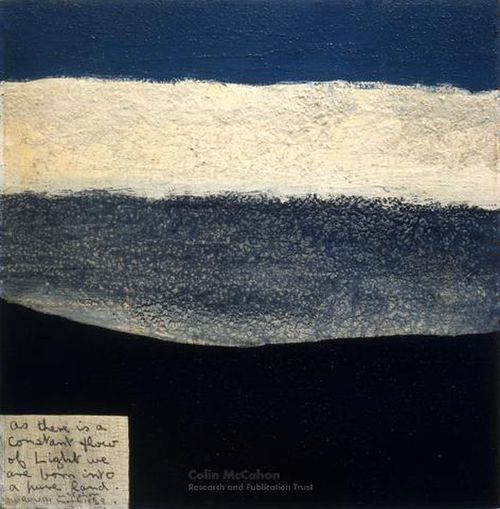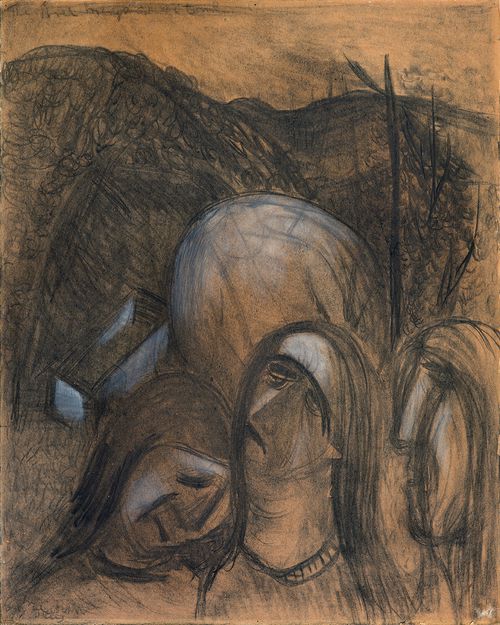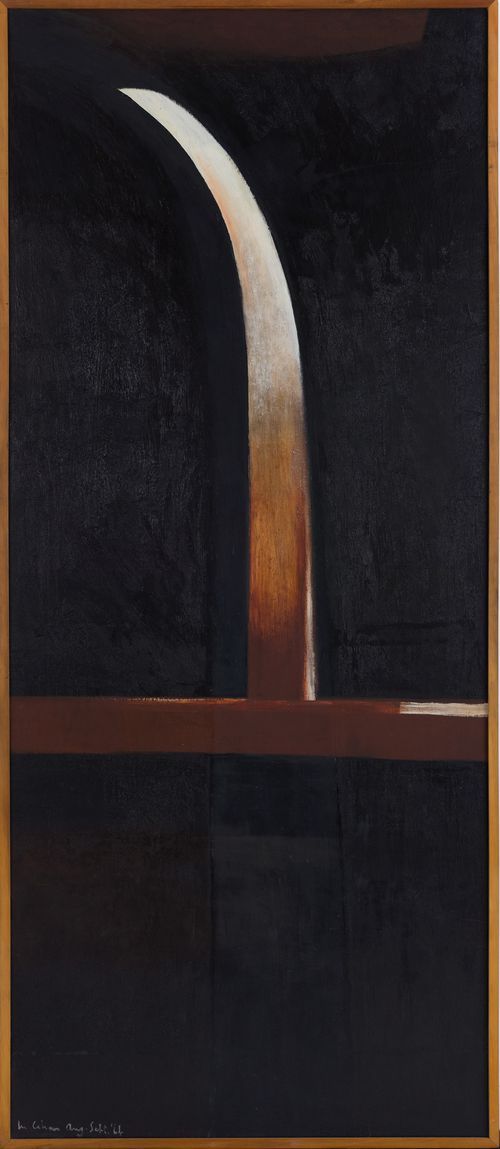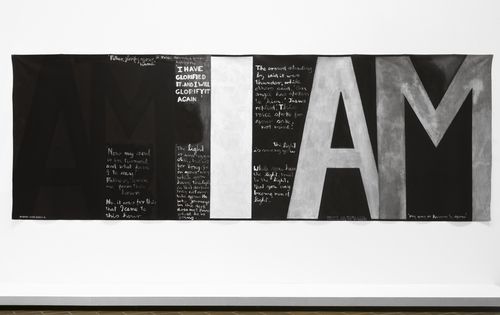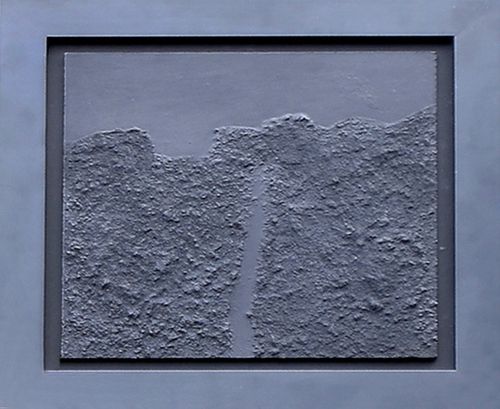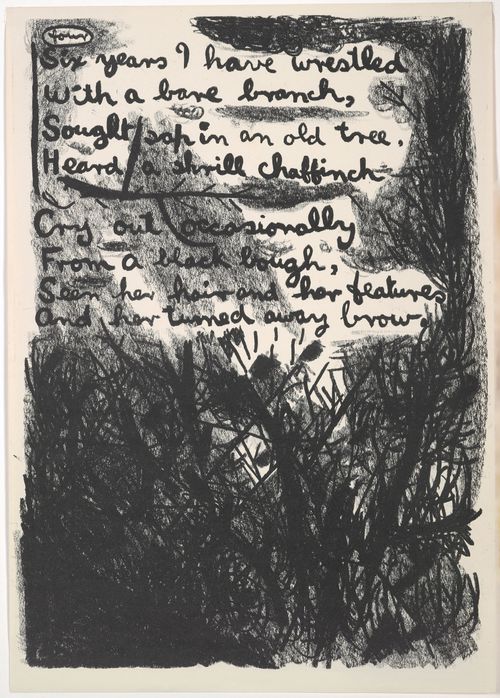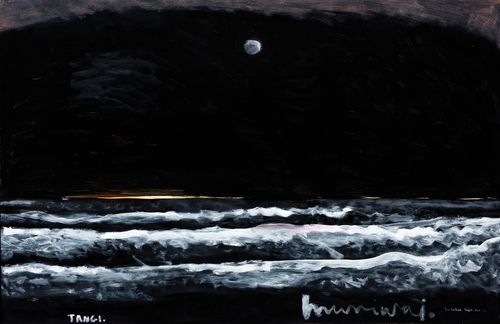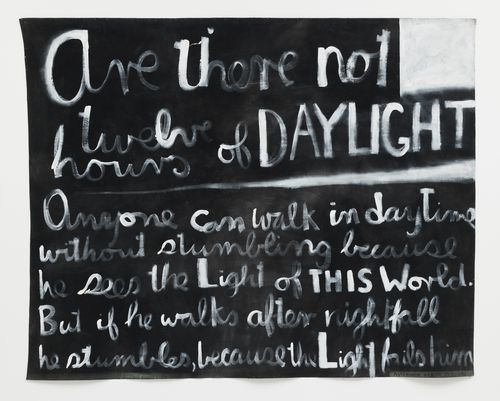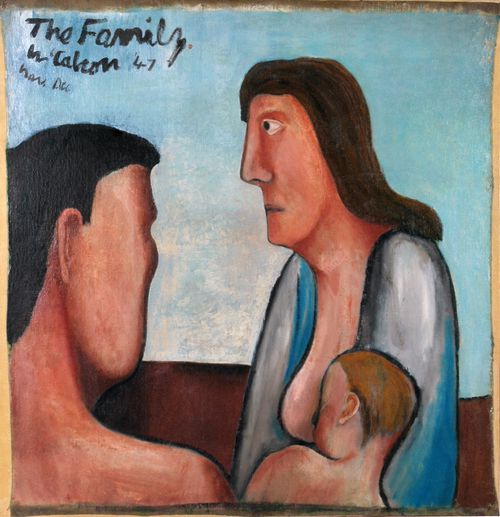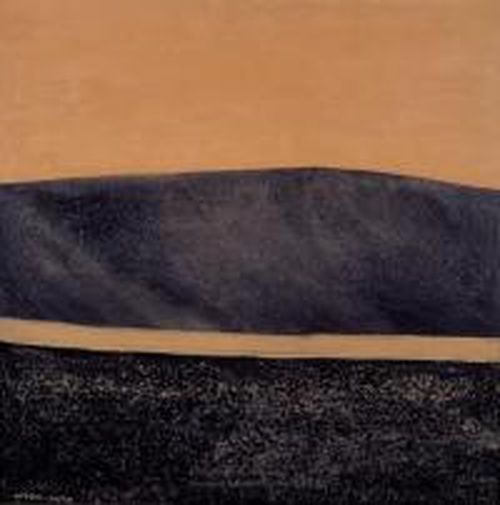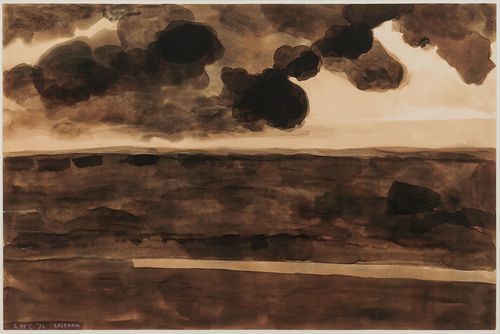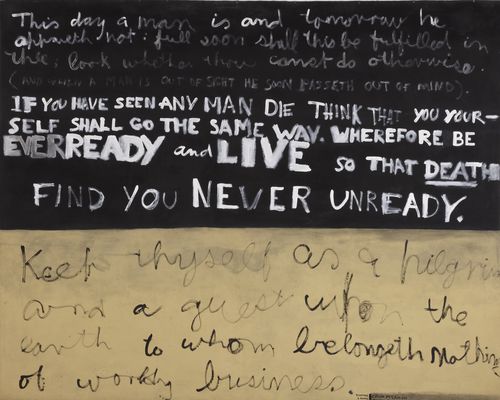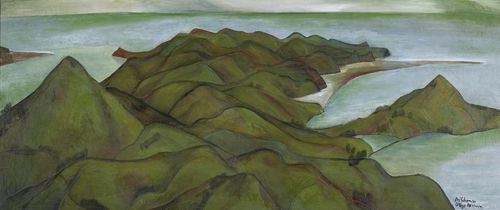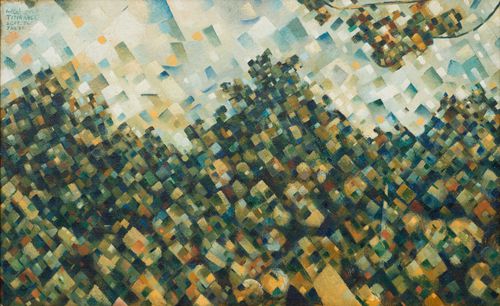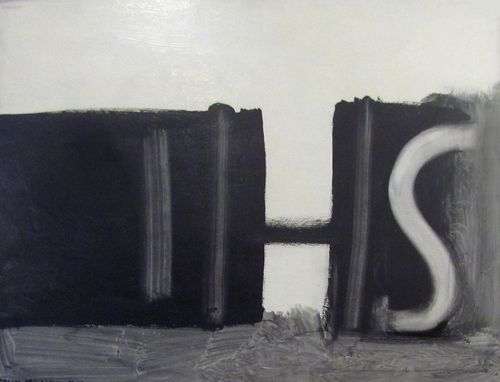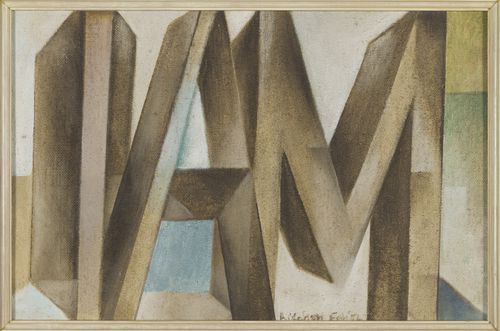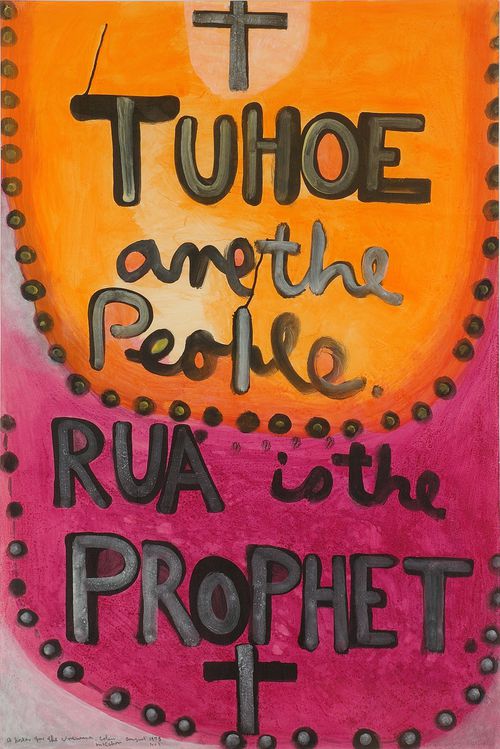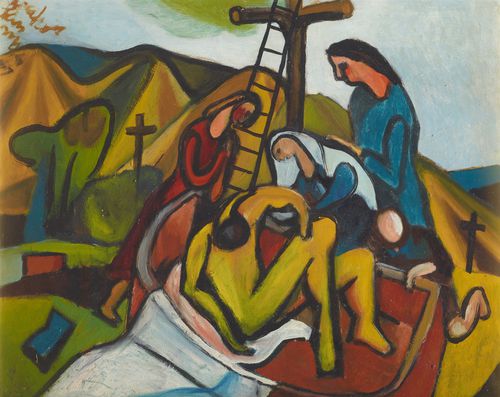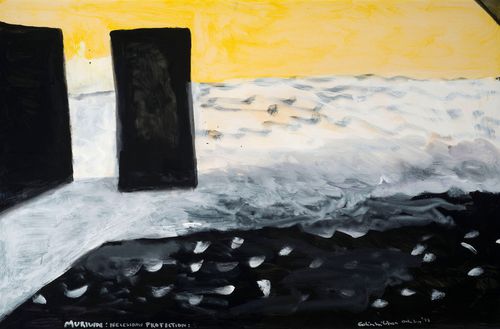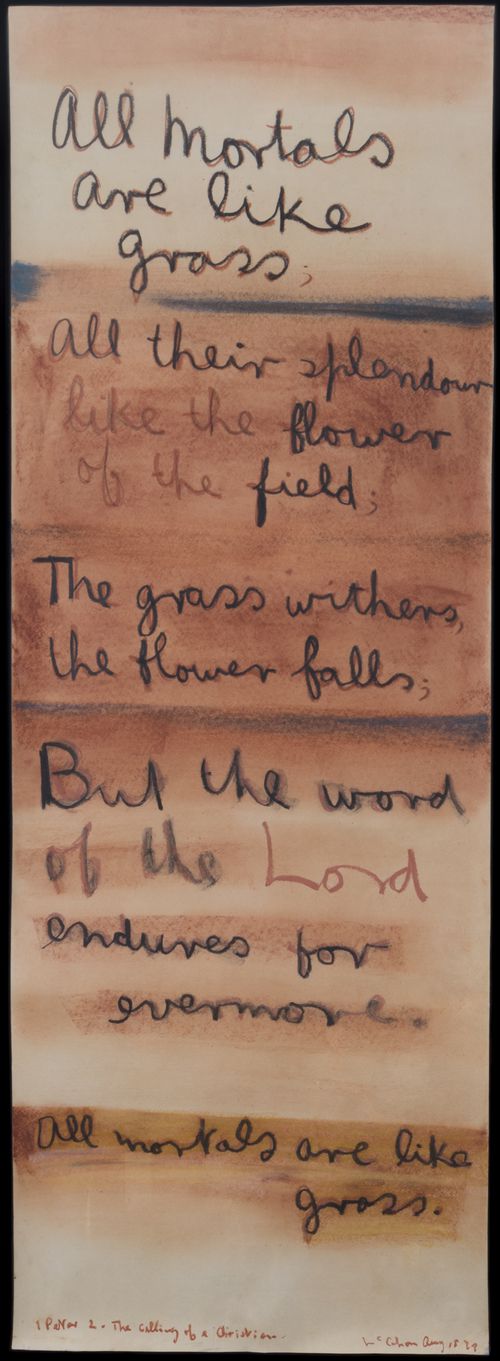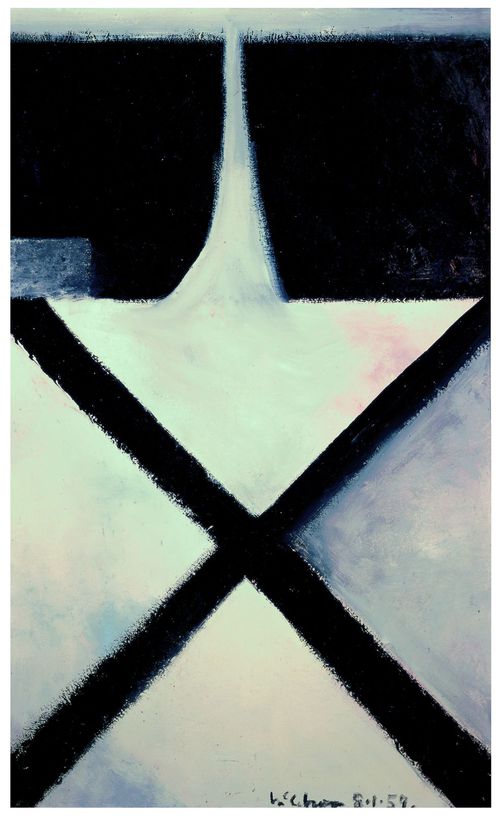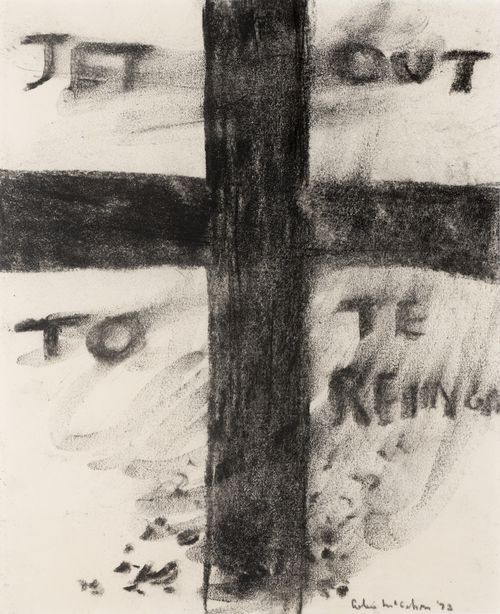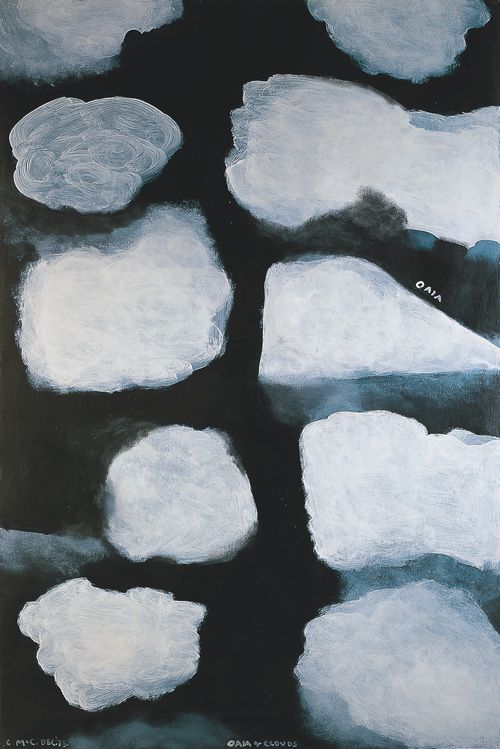Oaia and clouds
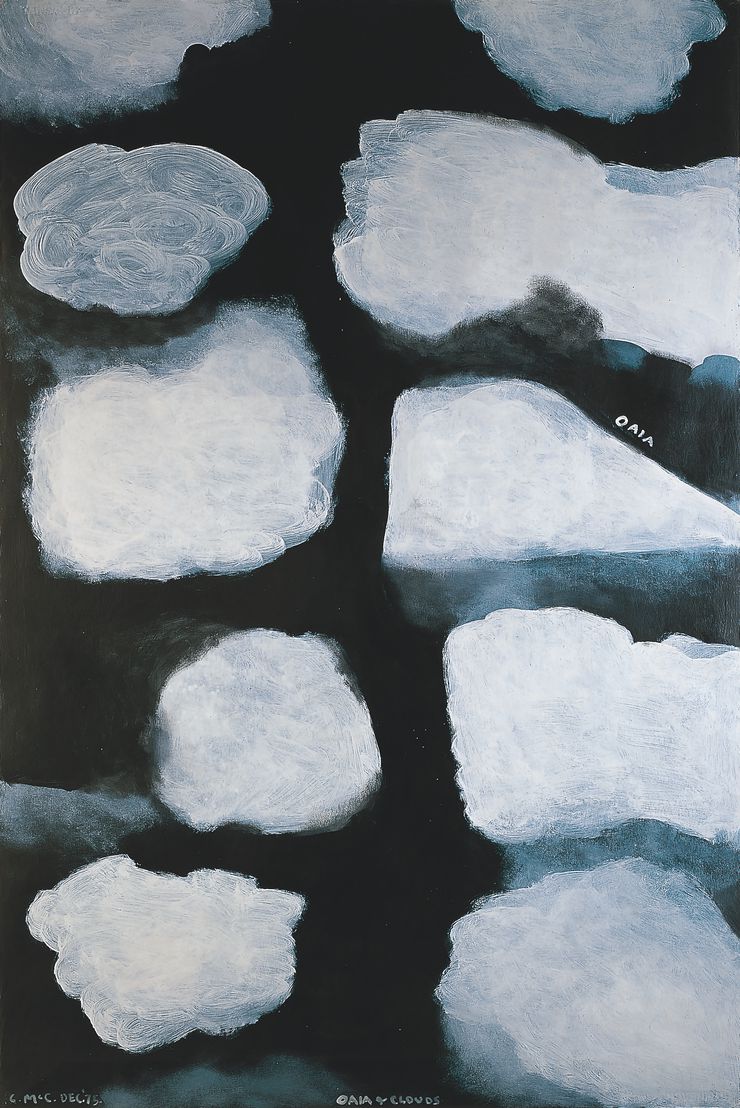
Colin McCahon, Oaia and clouds, 1975, synthetic polymer paint on paper, 070x715 mm. Pippin Barr on loan to the Jim Barr and Mary Barr loan collection, Dunedin Public Art Gallery, courtesy McCahon Research and Publication Trust.
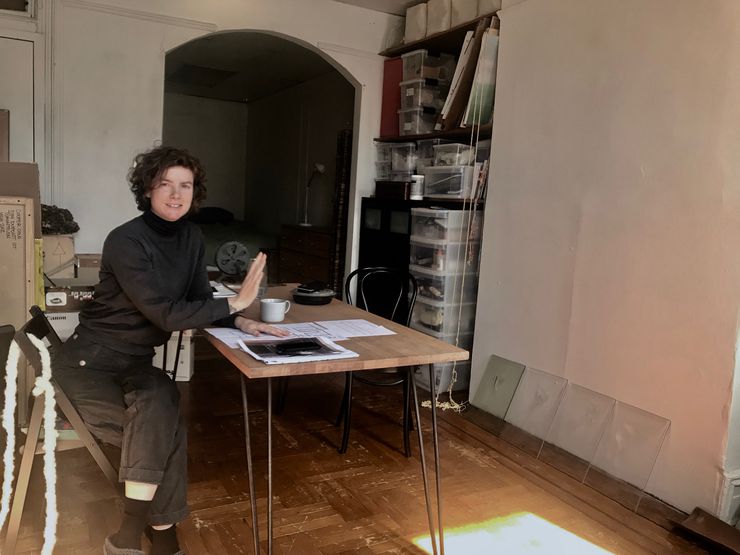
Kate Newby in her New York studio, 27 March, 2019. Photo courtesy of Jim and Mary Barr.
Jim Barr and Mary Barr
We lived with Colin McCahon’s Oaia and clouds (1975) for 26 years. Most of that time we were working from home so we saw a lot of it; on different walls, in different moods, under varying light. For the first five years it was simply pinned to the wall like a poster (as McCahon had originally intended) but as time went on we lost our nerve and had it framed. That changed things. A coastal view that might have swept on out across the wall became a slice of ocean. The reflections from the glass further complicated an already complicated composition.
This is a painting that looks at its subject from two different points of view. Down through the clouds as well as straight ahead at Oaia Island. It’s a kind of DIY Cubism. And yet if you go to Muriwai and look out at Oaia, you will see that the two viewpoints cobbled together in the painting are part of Muriwai’s geography. You can look down from the cliffs and you can look across to the island from the beach. It’s what Picasso once called, ‘a lie that makes us realize the truth’. There is another reason for McCahon grabbing at the bird’s eye view. Muriwai is a shelter for seabirds, and Oaia, was originally a safe nesting place for gannets until pressure of numbers pushed them to rocky outcrop nearer the shore.
The clouds themselves look kind of lumpy and solid, not something you’d want to fly through, and probably why McCahon called similar works from around this time ‘Rocks in the sky’. Knowing this particular work so well, we asked him on one of the couple of times we met, where that title had come from. He told us to go down to the beach at Muriwai and in the rocky outcroppings we’d see circular hollowed out pools of water. On the right day, McCahon reckoned, you could see the clouds reflected in them—rocks in the sky. We’ve never seen this story mentioned anywhere, maybe we just made it up.
And then of course there’s the whale. McCahon was fond of connecting Oaia Island with Herman Melville’s Moby Dick, the whale chased by Captain Ahab and the crew of the Pequod across the oceans. In Oaia and clouds, McCahon has enhanced the island’s whale-shaped profile and, like the albino Moby Dick, it glows white in the dark sea. When you compare it with most of the other Oaia / Moby Dick works, where the whale seems to be headed north, the ‘whale’ in Oaia and clouds points south, right to left. It’s always made us wonder if perhaps McCahon’s viewpoint was from the sea, out in Melville’s ‘appalling ocean’, looking toward the shore rather than his typical view from Muriwai’s cliff tops or the beach below. McCahon once said (we were trying not to quote him … but it’s impossible), ‘My painting tells you where I am at any given time, where I am living and the direction I am pointing in.’ So we’re opting for McCahon, probably metaphorically, in a boat pointing back towards the shore and flipping the whale to face the same way as all the others, ready to swim back north and ram a ship or two. That said, it’s not uncommon for real white whales to be spotted on the New Zealand coast; one was photographed four years ago drifting through Cook Strait. How well McCahon does transference. Christ in our landscape, the fabled white whale Moby Dick diving deep in our waters.
The first time we saw Oaia and clouds was on the floor of Wellington dealer Peter McLeavey’s gallery. Peter vanished upstairs to his you-can’t-come-in-here storeroom and returned carrying a large roll of paper sheets. Laying the bundle on the floor he began scrolling back the edges and McCahon’s cloud paintings rolled by, one after another—if he had done it at speed they might have animated; painted clouds scudding across black paper skies. There were wiry ones that looked like kids’ drawings, lumpy leaden ones ready to fall on our heads, ones so delicately painted they practically moved as we breathed, and finally nine rocks in the sky parting to reveal Oaia Island.
It’s odd to recall that for much of our lives McCahon’s brilliance was seen as a problem for other New Zealand artists. It was McCahon as blockage, a wall if you like, a thing to get over. Now it’s clear from the international success of later generations of artists, like Fiona Connor, Simon Denny, Kate Newby and Luke Willis Thompson, that something else was happening. By taking some stick and holding firm, McCahon cleared the way for the ambition of such modern careers. Not a wall so much as a gate.
